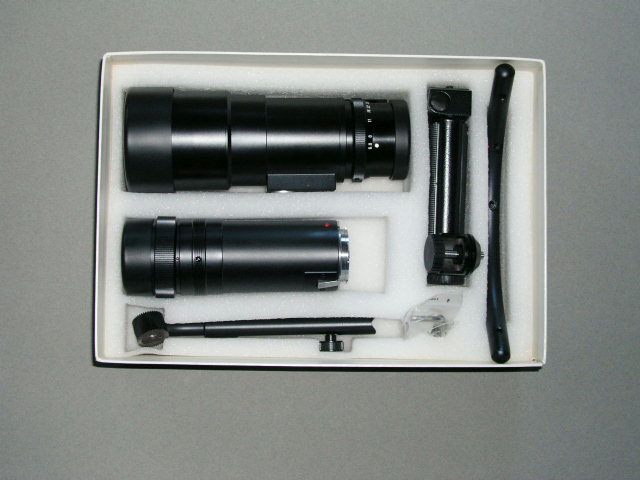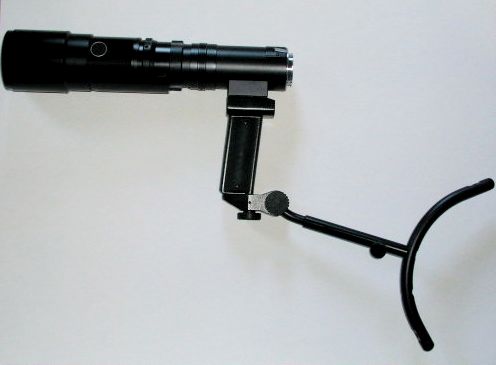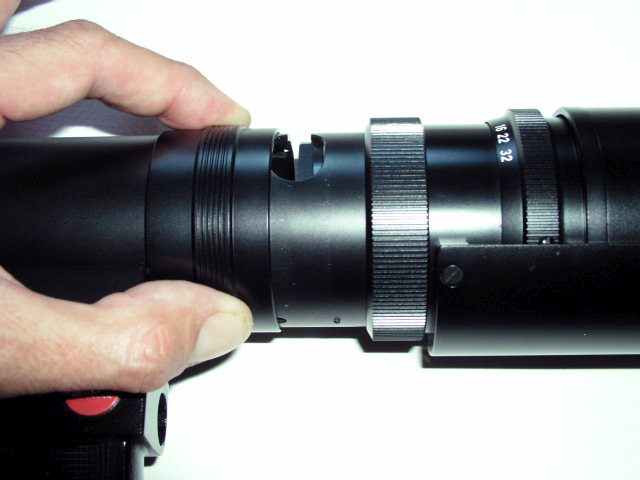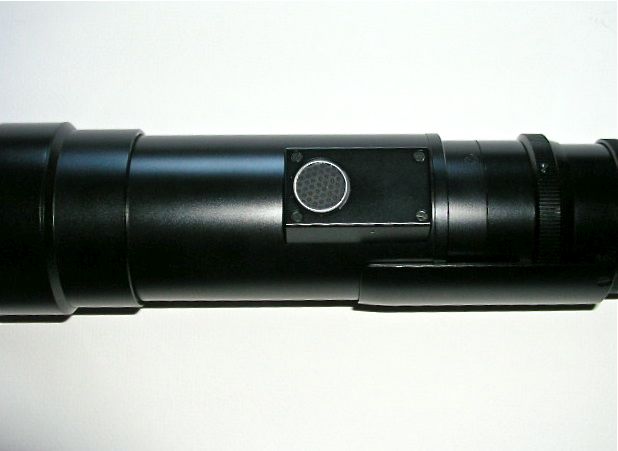Another funky lens.

Templeton sunset. Leicaflex SL, 400mm Telyt f/6.8 with adapter #14127,
1/125, f/6.8, Kodak Gold 100, handheld with shoulder brace.
Continuing the saga of odd lenses, here’s another one I used for years before it gave way to modern automated technology.
This one is at the opposite end of the range to the 20mm Russar profiled the other day and is none other than the magnificent Leitz 400mm f/6.8 Telyt.
Leitz has a long and storied tradition of making great 400mm lenses, starting with the 400mm f/5 Telyt made for the 1936 Olympics – you know, the games where Jesse Owens so disappointed German hopes for white supremacy. Indeed, you can bet there are many images documenting his four gold medals taken on this very lens. The pre-war model was uncoated and once America had recapitalized them on the sound principle that a fat German was safer than a hungry one, the Germans updated it post-war with a new mount and lens coatings to reduce flare. While the lens was fairly special for its time – f/5 at that length was really fast – it used a conventional rotating helicoid to focus and was a handful to use owing to its great weight. Handling was hardly helped by the fact that the Leica screw mount body user had to first fit a mirror box, the Visoflex, to permit focusing and viewing. This device did Rube Goldberg proud. To make matter worse, Leitz also offered a simple mounting tube and an optical viewfinder, though how on earth you focused or, for that matter, composed accurately with that remains a mystery to me.
So Leitz went back to the drawing board and conceived a handy follow focus mount with a trigger. The user held the grip and, on pressing the trigger, could change focus with a trombone sliding action, with fine focus being accomplished with a turn wheel under the thumb.
The focusing device, the Televit, came in Leica M and R mounts for use on the fine Leicaflex cameras and accepted the lens heads from the 200 f/4 and 280 f/4.8 existing lenses plus two new head units designed specially for the Televit.
These were the 400mm and 560 f/5.6 Telyt lens heads, which could only be used with the Televit, unlike the 200mm and 280mm lenses which came with a traditional, and detachable, helicoid focus mount. The Televit was a big improvement in the focusing department but the whole thing still weighed a ton.
So Leitz tried yet again and, in the 1970s, released their best effort yet, the 400mm and 560mm follow focus Telyts with a modest maximum aperture of f/6.8. These used a simple two element construction and were long focus not telephoto, meaning the 400mm lens really was 400mm (16 inches) long. Like the Televit, the heads for the two optical units were interchangeable and the lens came with a shoulder stock. This was a nice idea but in practice was a pain to assemble, so most dispensed with it. I always preferred a monopod with a QR base with mine and mostly used the lens at f/6.8. Sharpness did not improve on stopping down and you generally wanted to avoid doing that as the aperture control was as rudimentary as on the pre-war f/5 predecessor, meaning click stops with no preset mechanism. Ugh!
I used my 400mm f/6.8 Telyt first on my M2 and M3 with a Visoflex 2 or Visoflex 3 mirror box (much improved versions of the earlier Visoflex 1, but still Goldbergish), then on my Leicaflex SL film body with an adapter where it worked well if slowly – exposure metering was a match-the-needles affair. A nicely balanced outfit. But it really came into its own when the Canon 5D came along and one more adapter ring now allowed use of the lens on a modern high definition full frame body with aperture priority exposure automation.

The 400mm f/6.8 Telyt dismantled for transit.

Assembled.

Built-in filter slot.

The focus release button for the trombone movement.
When I first bought the lens it had been sitting unused for many years and the grease in the trombone slide had dried out. $80 later it was relubricated and working superbly. You really needed no fine focus control as it was so nicely balanced that achieving fine focus just using the sliding motion was easy. This was probably as good as traditional manual focus technology every got with a lens of this length. They can be found for a song on the used market; just prepare to have yours relubricated before use.
As you can see the lens was no slouch:

Egrets off Highway 1, California. Canon 5D, 400mm f/6.8 Telyt with #14127 Leica-M to Leica-R
and Leica-R to Canon EOS adapters, 1/125, f/11, ISO 200, monopod.
The Telyt was sold (as it was in mint condition it went to a collector, needless to add – what a waste) and replaced with the Canon 400mm f/5.6 ‘L’ which is superior in every way – sharper, auto aperture, superb autofocus. Technology had moved on and it’s the reason you will never see a pro using a Leica at a soccer game – they still do not make autofocus long lenses to this day, and without autofocus you cannot compete. That Canon lens has, in turn, been largely superseded by the magical Panasonic 45-200 (90-400mm FFE) which offers 400mm equivalent length at the long end at f/5.6 and – here’s the magical bit – fits in your jacket pocket and weighs under one pound. And did I mention that it includes anti-shake technology?